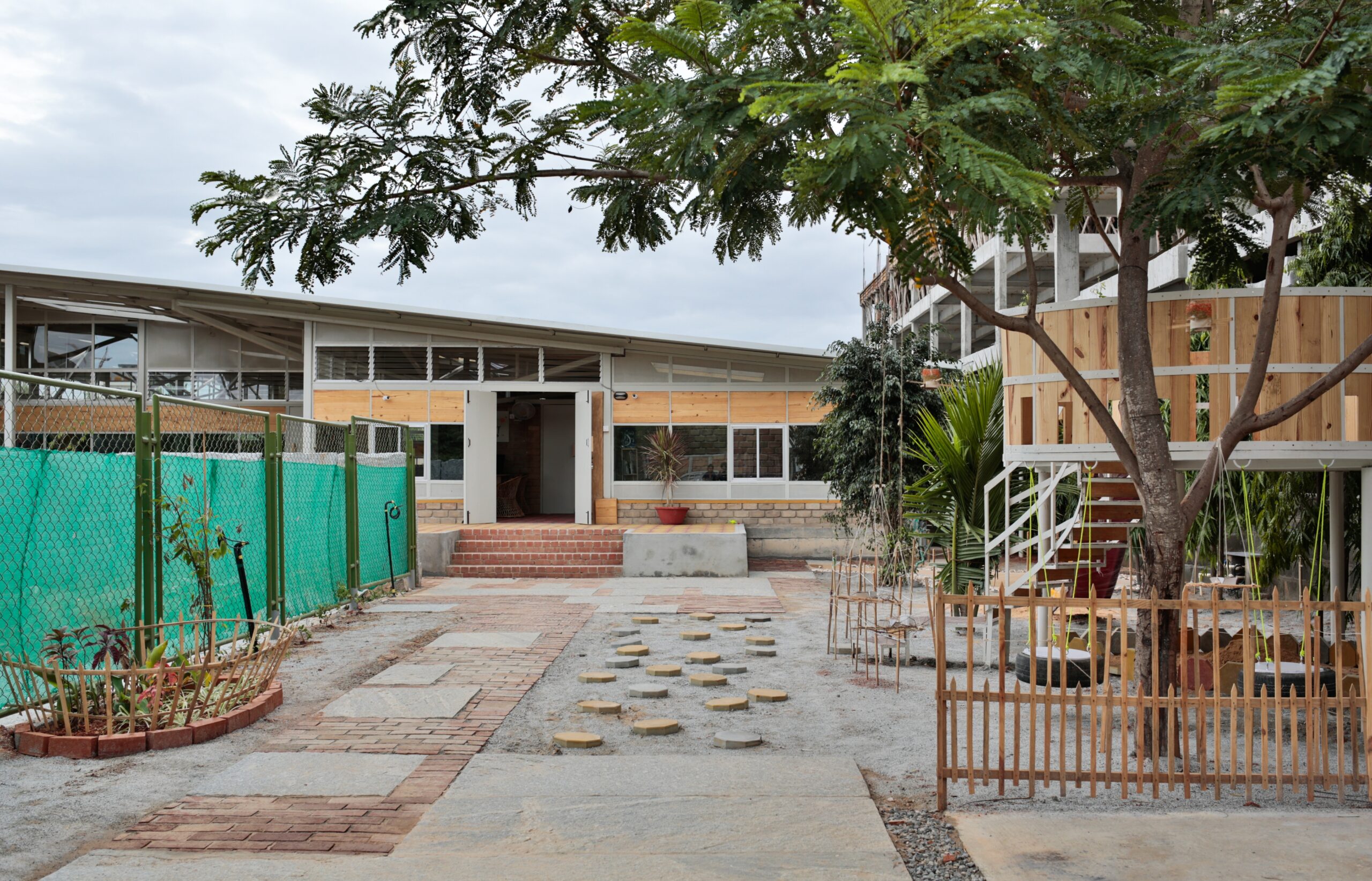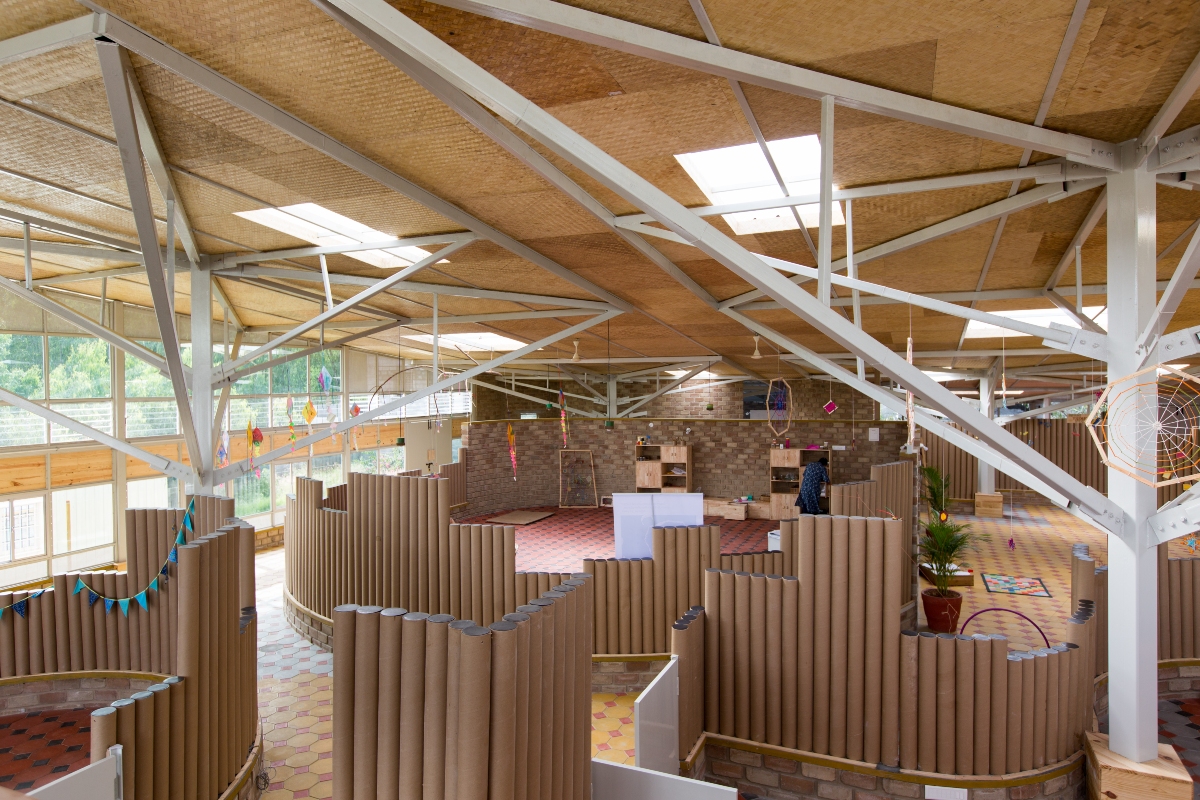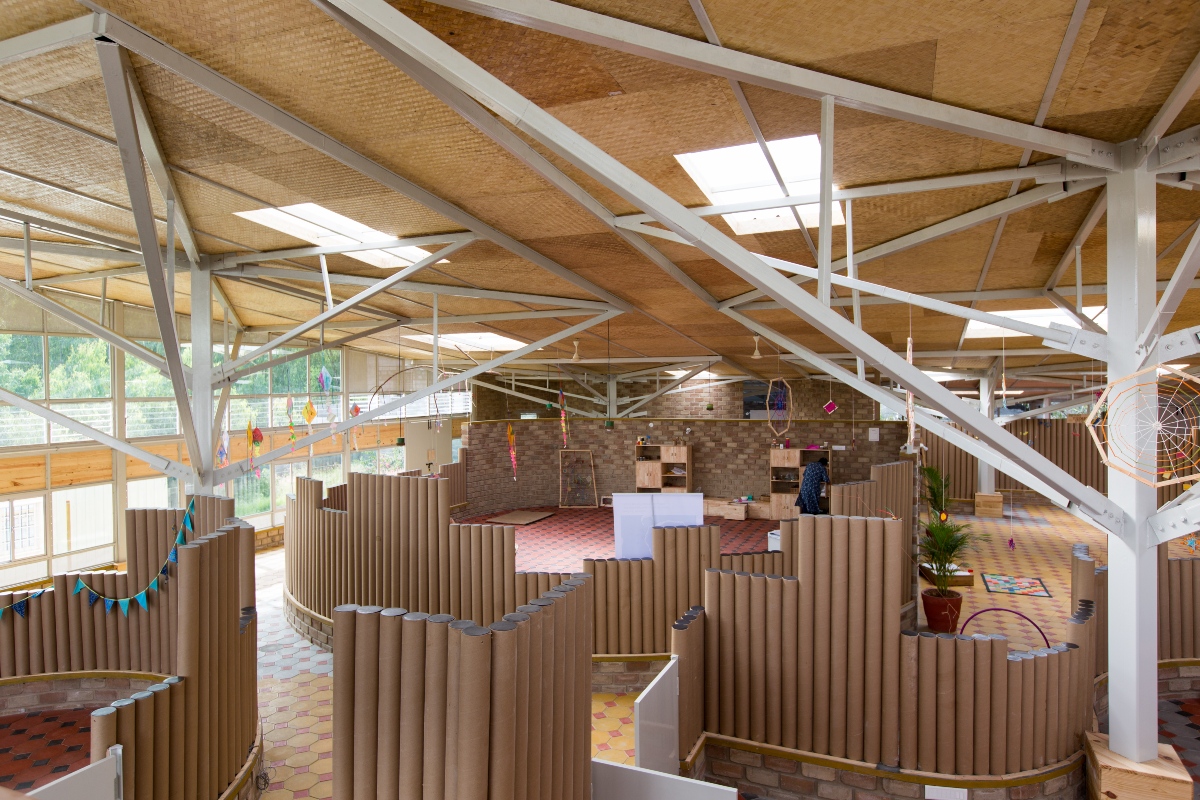Can you tell us about your journey into architecture and what inspired you to focus on sustainable design?
The moment was both serendipitous and instrumental in addressing the prevailing crisis. At the onset of my journey, my primary concern was to reduce construction costs, thus the method of construction was crucial during that phase. We diligently explored diverse materials and construction techniques aimed at cost reduction. As the city expanded and homes began to sprout in peri-urban areas, the water crisis emerged as a formidable challenge for us. Bringing together these two elements – materials/techniques and water issues – sparked the genesis of our concept of ecological design.
Zero waste building is another area where Biome is making strides. Could you discuss some innovative approaches your team has taken to minimise construction waste and repurpose materials in your projects?
This is an aspirational journey for us.
We follow the following points:
– Use less variety of materials in the design.
– Make elements in the building that can be built with waste at the site or are waste sinks.
– Use recycled materials within the build.
– Make buildings recyclable in future. Build a quarry for the future.

Could you highlight a project where steel played a significant role in achieving sustainability goals? How did you overcome any challenges associated with steel usage in that project?
We use steel in moderation and mostly in RCC where we need tension elements. In a school we designed – Atelier- we used steel for the supporting members. The concept here was to reuse every part of the building in the future and nothing will go to the landfill. Our consultant designed these beautiful columns in steel and we did not face any challenges.
As the demand for sustainable housing continues to grow, how do you see the role of steel evolving in the context of affordable and environmentally conscious construction practices?
Firstly, it’s important to recognise that steel plays a crucial role in the development sector of our country. However, when considering its use, we must carefully assess where and when to incorporate steel, particularly given its high embodied energy and water usage during manufacturing.

Practices associated with ecological design also prioritise the sourcing of materials and assess the environmental and social safeguards implemented by manufacturers. Unfortunately, there is currently limited transparency regarding these aspects within the industry. Moving forward, it’s essential for the industry to embrace greater transparency and accountability in order to meet the growing demand for sustainable and environmentally conscious construction practices.
What advice would you give to aspiring architects looking to integrate steel into their designs while prioritising sustainability?
They should utilise steel sparingly, incorporating it into elements that can be easily reused with minimal need for reprocessing. The paramount characteristic of steel is its capacity for reuse, and this principle should serve as the foundational guideline when integrating steel into designs.

Education and advocacy are important aspects of promoting sustainable architecture. Can you share some initiatives you’re involved in to raise awareness about sustainable design practices?
Our practice serves as a learning hub in itself. Nearly 500 architecture interns have gained valuable experience here and are now implementing these sustainable design principles in their own projects worldwide. Many architects who have worked with us continue to apply these concepts to address challenges in their local communities. While we do engage with institutions when time allows, and our thoughts align, we feel that learning within a practice is essential for an architect’s growth.
Looking ahead, what do you envision as the future direction of sustainable architecture, particularly in urban settings like Bangalore?
In this era of climate change, it is imperative that any ecological design of the future transcends mere building design and instead encompasses the ecosystems, regardless of location. Climate change is a planetary project, and as architects and designers, we embrace a comprehensive approach to ecological design.
Rather than focusing solely on individual buildings or projects, ecological design should consider the interconnectedness of natural systems, human communities, and built environments.





